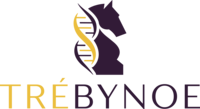This study discusses the decision faced by corporation (CCPC) owners on whether to pay themselves through salary or dividends. The tax code aims for a similar tax rate regardless of your choice via something called “integration.” A common strategy suggests consuming dividends and retaining earnings in the corporation for future lower tax years. However, this approach ignores the benefits of registered accounts and deducting salary for corporate taxes, not to mention CPP. The study aims to understand the trade-off between salary and dividends, considering RRSP room, Individual Pension Plans (IPP), and the concept of consistent salary versus maximizing tax-efficient withdrawals via notional accounts plus a salary.
I found it very interesting to read, and I hope you do too. I think IPPs are heavily underutilized since the integration changes on passive income within a corporation and, in the future, will become more popular as accountants become more familiar with the benefits.
Unfortunately, due to their complexity, many “financial advisors” shy away from them. I will say this frankly: if you are a financial planner working with business owners and have not yet taken the time to learn about IPPs and notional accounts, you are doing your clients a disservice.
If you are an accountant and haven’t looked into the possibilities yet, I implore you to start. I know it’s easier to pay out dividends. I know it’s an easy story to tell the client about paying less personal tax, but I ask, don’t stop the calculations there. Go deeper and explore the possibilities; I even understand that your clients probably won’t thank you for it! They will chalk it up to “thats your job,” even if you are the 1 in 50 accountants doing that extra work for them. But at the very least, you will know you did the right thing for them.
I know it may be a long read for some. Below, I’ve tried to summarize as best as I can during an evening with a beer and orange juice in hand. (seriously, if you haven’t already, you need to try it!)
If you have any comments or questions, please feel free to reach out.
Tre Bynoe
Link to the study – https://www.pwlcapital.com/wp-content/uploads/2023/04/OptimalCompensationSavingandConsumptionforOwners_2023-3-1.pdf
Summary
2.1.3
Inflation eats notional account balances, so it’s best to use these as soon as possible.
2.2 Welcome to IPPs – You can defer more income in an IPP than an RRSP after a certain age of around 40 for most people. Because of how the math works, if the investments don’t perform at 7.5%, you can add to the IPP. Further increasing the amount of money tax can be deferred on.
2.3 What happens on death? Explains loss carryback and pipeline planning – Side note here, both these strategies can be enhanced further using permanent life insurance as a planning tool. If you are not sure how that could work, let me know, and I can explain that to you.
3.3 Summarizes the methodology. Read 3.3 in detail (excluding 3.3.4). A good understanding of this is needed to understand the results.
3.4 Read Table 10 twice. The expected return is after the impact of inflation. This is important to be able to understand the results without mentally having to adjust for inflation, as you must do for many financial planning tools.
4.0 This is the good stuff! You have to read it.
4.1 talks about what’s best for the extremes spend as much as i can vs maximize net worth on death
4.2 This Is where most people will sit – wanting to spend a good amount while also creating some legacy. Trying to determine the efficient frontier.
5.0 I mean you’ve read this far… you may as well finish it.
My summary
If the client wants to spend over 30% of the company’s pre-tax income, lean towards salary plus IPP.
If they want less than 30%, then a focus on using notional accounts plus salary seemed better overall. It didn’t make sense to ignore the advantage of tax deferral with RRSPs and IPPs in favour of dividend-only compensation.
Now I think there are a few shortfalls in this example, the big one being this client doesn’t sell his business. Intuitively an IPP strategy will make a lot of sense if you do not have the option of holding a large investment portfolio inside of a corporation throughout retirement.
The benefit of utilizing IPPs increases with lower risk. And as a general rule, the best course of action is to wind down the IPP at retirement to avoid the carry costs and to increase flexibility in income. This is true even when factoring the payout in the retirement year. The benefits increase when thinking about the ability to split the pension income throughout retirement with a spouse.
The biggest downside to an IPP is the approx $1750 annual cost to administer the plan. This is offset by the larger contribution room possible, and the cost can be paid from the corporation instead of personally.




